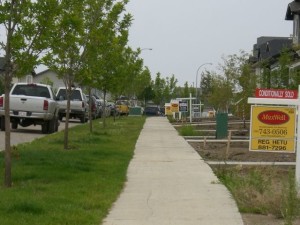I took a look at Fort McMurray after the crude oil crash, in ’09. I was curious how a boom town looked turning bust.
Alberta’s Oil Drunk Hangover, Montreal Gazette (September, 2009)
The full article is linked above, an excerpt below:
In Fort McMurray, it’s been a bad year for the cocaine and snowmobile dealers but boom times for the repo companies; thousands of oil sands workers are returning to places as far removed as Newfoundland, China and the Philippines; and Alberta’s provincial government is forecasting a $6.9-billion shortfall this fiscal year, its first deficit in 15 years.
With the party over, how big is the hangover?
Unemployment at home and in other provinces, pay cuts for remaining oil sands workers, and lean times for certain Fort McMurray businesses are all pieces of that puzzle.
The oil sands boom brought with it a culture of big spending and decadence. It also brought tens of thousands of workers to the Fort McMurray region in northern Alberta. A century ago, writers like Jack London and the poet Robert Service immortalized the adventure-seeking gold stampeders of the Klondike. Likewise, there have been Wild West stories emanating from Fort McMurray these past years: roughnecks sharing a basement with seven others, their bed-spaces separated by sheets for walls, working 12-hour days for 21 days straight, earning $150,000 or more in manual labour.
With oil prices soaring since 2003, development in the oil sands had taken off at breakneck speed. With tens of billions of dollars being spent, and up to 45 per cent of Canada’s oil now produced there, the oil sands were called the engine of Canada’s growth.
Then, the engine stalled.
In 2008, the price for a barrel of crude went down by two-thirds: from a peak of $148 U.S. per barrel, to a low of $38, all within a few months. As quickly, billions of dollars were dropped from oil sands investment projections, major expansion projects were delayed, and thousands were laid off. Spending projections over the next 11 years have been cut by more than $100 billion.
Between July 2008 and July 2009, Alberta shed almost 64,000 full-time jobs and the province’s unemployment rate hit 7.2 per cent in July, the highest in 13 years. Many of those who kept their oil sands jobs were forced to take pay cuts, often 15-20 per cent.
During the boom, the population of Wood Buffalo/Fort McMurray had mushroomed to 103,334, up 141 per cent over nine years. The population of the work camps built on or near the oil sands grew an eye-popping 637 per cent to 26,284 during that period.
Temporary foreign workers were recruited from countries like China, Russia, Venezuela and the Philippines. The Alberta Federation of Labour estimates that the number of temporary foreign workers in the province increased from 13,000 in 2004 to 57,000 in 2008, with many of those destined for the oil sands work camps.
They were joined at the camps by many more from out of province: Canadian shift-workers on rotations (for example, working 14 days then taking 14 days off) flew in to work and flew home for their days off, often at their employer’s expense.


Leave a Reply